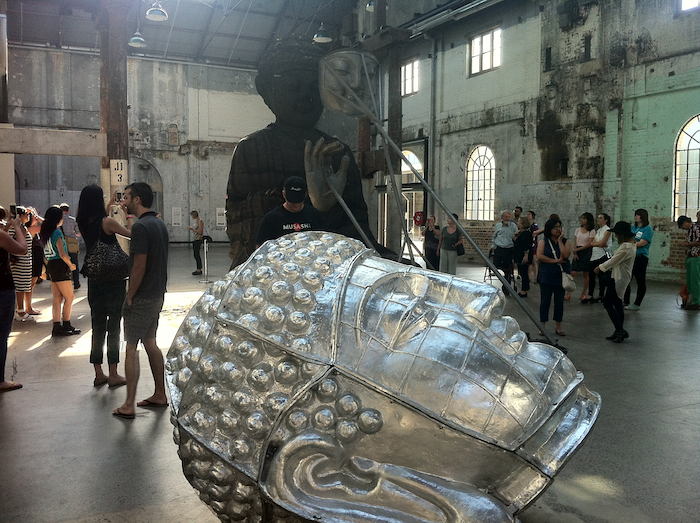“Ideas alone can be works of art,”[1] proclaimed American Minimalist artist Sol LeWitt in his 1968 Sentences on Conceptual Art, summoning up a new stream of thought that emerged in 1960s America[2] as a reaction to Clement Greenberg’s insistence on formalism and opticality, a stance that art should be experienced solely through ‘visual stimuli’ and in a disinterested manner.[3] In an anarchic Dada style,[4] Conceptual Art (as this new stream came to be known) proposed “perceptual withdrawal”[5] – instead of producing ‘sacred’ and valuable art objects, they offered only brief linguistic description of their ideas or simple visual statements such as Lawrence Weiner’s As Long As It Lasts (Figure 1). If a physical object of some sort was present it was either perplexingly bare or badly executed and aesthetically unappealing. What is more, these artworks mixed a variety of media (including everyday objects and all sorts of rubbish), thus attacking Greenberg’s “quest for medium-specific purity.”[6] Purposefully provocative, conceptual artworks encouraged a renewed enquiry into what art is or should be.
Category Archives: Art in Dialogue
Impermanence
In the sixteenth and seventeenth century, symbols of vanitas and momentum mori signified fragility of life and earthly pleasures. Opulent items such as exotic food, imported wine, and luscious flowers were painted as reminders of inevitable decay and brevity of material possessions. In the twenty-first century, the idea of impermanence is explored in significantly different forms and mediums. The core message, however, remains (more-less) the same.
G***M***V***R***W
*_* Frida
Martiel and Da Vinci

PUNTO DE FUGA (2013), CARLOS MARTIEL: Performance Art version of Da Vinci’s Vitruvian Man (c. 1490)
“By interpreting the drawing with his own body, Martiel challenged the Western cultural notion frequently seen in art history that the caucasian man is the center around which contemporary society revolves.”
Celebrity Culture

LEFT: Andy Warhol, Marilyn Monroe, 1967 US, screenprint. RIGHT: Torii Kiyonobu, The actor Ichikawa Danjuro II as Soga no Juro, 1733 Japan, handcolored woodblock print. Japanese artist Kiyonobu was known for depiction of famous people; mainly actors and geishas who rose to the status of celebrity in the 18th century Japanese society.
Gaze, Curiosity, Voyerism
Chance and Instability of Representation

Spatters of ink, instability of representation, effects of chance, “art of the random and accidental or unconscious effects on the edge of incoherence and formlessness”*. LEFT: Hsu Wei, Flower and Fruit (late Ming, mid 16th century), hanging scroll, ink. RIGHT: Jackson Pollock, Number 8 (1949), oil, enamel, and aluminum paint on canvas.
Exploring Psychological Space

#knowledge #advancements in science #world-possessions #life-balance (restricting ones desires) #transience of time #prominent psychological dimensions #exploring psychological space. LEFT: Hans Holbein, The Ambassadors (1533). CENTER: Albrecht Dürer, Melencolia I (1514). RIGHT: Johannes Vermeer, A Woman Holding a Balance (1663)
Artist as a martyr / political activist

Petr Andreevich Pavlensky, a 21st century Russian conceptual artist and political activist sealed his lips in protest for Pussy Riots. In the late 18th century (neo-classicism), Jacques-Louise David comments on the political situation during the French Revolution and paints The Death of Marat. Features of neo-classicism: stories of high moral values; self-sacrifice; uncompromising clarity of a narrative.




